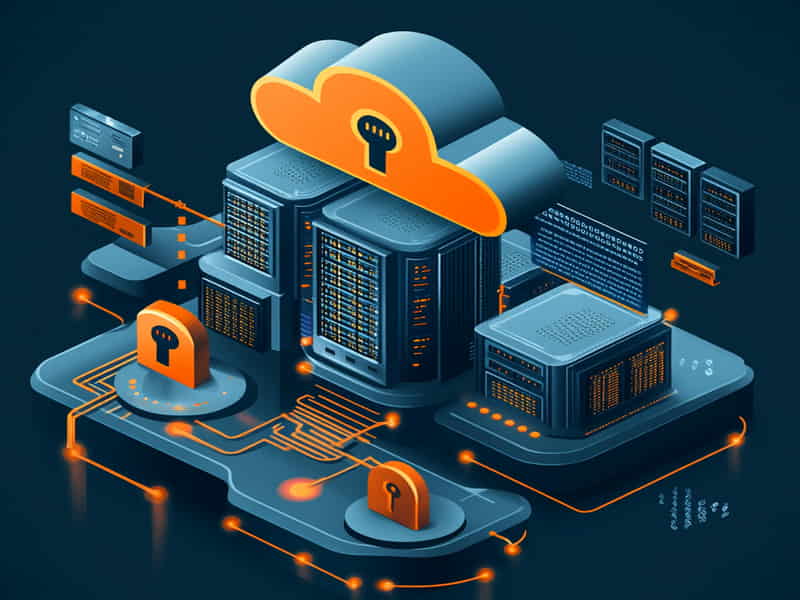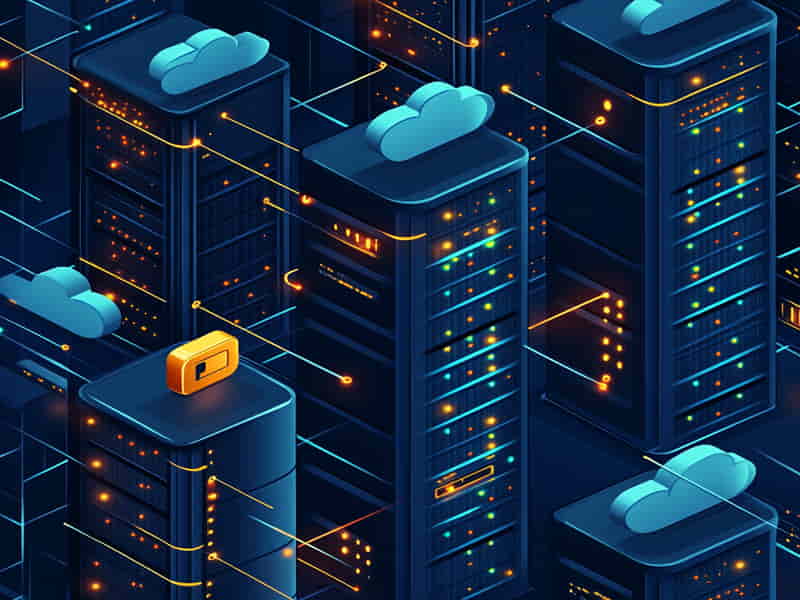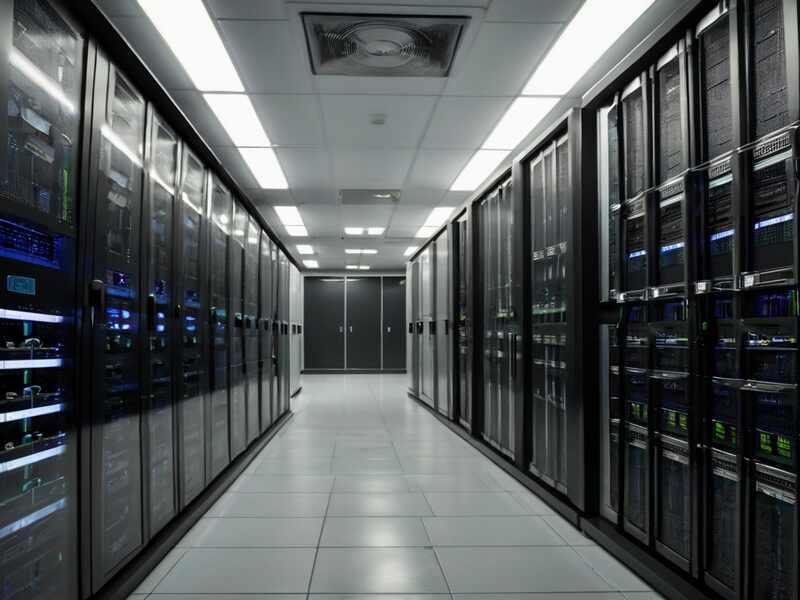SCCM Documentation
Introduction of SCCM
System Center Configuration Manager (SCCM) is an endpoint management platform built for businesses.
Designed to automate and streamline the maintenance and security management processes across large fleets of PCs and mobile devices within organisations, SCCM automates many tedious manual processes for endpoint administration and simplifies others, such as PC setup or upgrades for more secure fleet operations.
It serves businesses well. For those just getting started in SCCM: This SCCM tutorial for beginners where they introduce what SCCM offers you a brief introduction.
SCCM provides multiple services, such as software distribution, patch management, operating system deployment, hardware/software inventory tracking and remote management.
IT managers can leverage it to quickly deploy software, applications, and operating systems across many devices while ensuring they comply with business regulations and remain secure.
Administrators can use SCCM to monitor device health and performance, diagnose issues quickly, and enforce security regulations, making this tool essential to businesses looking to secure and manage their IT infrastructure effectively.

Meaning of SCCM
SCCM is commonly abbreviated as SCCM (System Center Configuration Manager). Itis an enterprise systems management solution used for overseeing large fleets of computers and mobile devices within an enterprise environment.
IT managers use it as a central platform to distribute software, applications and operating systems while overseeing device health and performance monitoring.
SCCM features multiple capabilities for software distribution, patch management, operating system deployment, inventory tracking, and remote management.
IT administrators use this program to automate and enforce security policies and ensure that devices meet organizational standards and are up to date.
SCCM (System Center Configuration Manager) is an innovative solution for overseeing IT infrastructure management and security used by businesses of all sizes and industries.
SCCM Client Installation:
SCCM installation and configuration step by stepprocedures typically include environment preparation, software installation, site system role configuration, content distribution to end-users, and monitoring.
Before beginning the SCCM software installation, ensure that it fulfils minimal system requirements and all prerequisites.
Installation of the operating system, SQL Server and all necessary prerequisites must occur first.
After satisfying the requirements for these components, configure Active Directory, network, and security configuration settings as necessary before running the setup application and following its tutorial for choosing site type/code configuration options and other preferences.
Configuring site system roles, dispersing content, and installing users onto devices after installation must all co-occur for proper functioning.
What are the Remote Backups and Site Server Integrity?
A site backup in Configuration Manager can be performed using its built-in maintenance process, SQL Server Maintenance Plans, or Data Protection Manager.
The default maintenance plan backs up your site database, registry keys, files, and directories, including CD.Latest folder.
With Afterbackup.bat files available, you can perform content library and package source site maintenance commands if reloading occurs on-site server instances; package source files should also be backed up before any server rebuilds.
SQL includes a script to monitor package path usage. Furthermore, its built-in site maintenance process enables database backups without compression capabilities.
To effectively back up, create a remote server backup folder with server and service account rights and run the backup site server task using its built-in plan and SQL code.
The default site code backup creates a Site Code folder and saves it in a UNC location, while AfterBackup.bat copies additional directories as backup copies.
No backups are taken of the content library, which contains package files. The sources directory contains shared packages and should be protected separately.
Back up the WSUS database, content, and site system responsibilities, such as the software update points. Acquire the SCUP user profile’s local database file.
How do Custom Backups, Scheduling, and Permissions work?
For an effective maintenance plan, start the SQL Server agent automatically via the configuration manager and create an alternative maintenance plan using SQL to back up the database instead of following site maintenance practices.
Create an SQL backup folder and back it up, running cleanup tasks to backup databases as they come online. Switch the destination path from its default local path to UNC storage for easy sharing with SQL server accounts with UNC sharing rights.
SCCM has two backup methods: Default SQL and custom backup (copying the CD.Latest folder to the UNC location for custom). Both options utilise simple batch files for efficient maintenance purposes.
SCCM content backup records all Robocopy jobs run under computer or system accounts and saves them to an appropriate backup folder.

SCCM Roles
System Center Configuration Manager (SCCM) supports numerous roles that users or devices may assume to complete specific activities.
Here are a few frequently assigned SCCM roles:
Site Server: The function entails hosting a site’s database, managing visitors’ communications, and disseminating information to users.
Distribution Point: Latter’s responsibility involves storing and disseminating software applications and operating systems to customers.
State Migration Point (SMP): The role saves user state information during operating system deployments.
Management Point (MP): MP bridges user communication channels, such as policy requests and software delivery.
Reporting Point: The reporting Pointfunction creates and distributes reports to administrators.
Software Update Point: A position oversees software updates and patches for user systems.
Fallback Status Point: This task entails collecting and storing state messages from users who cannot connect to their primary server, providing fallback status to these individuals as soon as they cannot.
Application Catalog Role: The role is designed to provide users with a web-based catalogue of applications available for purchase or subscription.
Asset Intelligence Synchronization Point: This function manages and distributes asset intelligence data with asset intelligence services.
Endpoint Protection Point: The function monitors, distributes, and enforces anti-malware definitions amongst end users.
These roles may be assigned to servers and devices in an SCCM environment according to your organisation’s needs and requirements.
IT administrators can utilise roles to delegate specific tasks and responsibilities among multiple people or devices, increasing efficiency and effectiveness within their SCCM system.
Importance of WSUS Backup and SCCM Reinstallation
It is installing cumulative update 12 for upgrading SQL 2017, including connecting to SQL and restoring its backup WSUS backup files from backup servers.
Right-click databases to restore Files or File Groups as appropriate.Copy and paste the SUSDB backup’s UNC path into the database; your database is restored at this location.
When installing SCCM, memory optimisations, WSUS reinstallation, and connecting to SCCM.
ContosoLocal server connection as well as setting an 8GB SQL memory limit are required; warnings regarding potential reinstallation errors must also be avoided by setting this minimum storage quota for SQL databases should they appear during setup or uninstallation processes are avoided by setting this minimum threshold of 8GB SQL memory capacity per server instance before starting the installation process.
They reinstall WSUS using SQL Server instead of Windows Internal, rebuilding and synchronising WSUS database updates rather than recovering them from previous operating systems, as the recovery of earlier OSes is unsupported.
After performing the post-installation task, the WSUS installation begins. They verify that your database exists and upgrade it, although they advise starting fresh with a clean install if upgrading from an earlier operating system version for best performance.
What are the Strategies for Update Groups, Scheduling, and Content Management?
The proposed solution is to create a software update group to scan for updates and enable upgrades while keeping all applications separate (the default is none).
Focusing on one computer for upgrades reduces the necessity of repeatedly downloading updates from previous years.
To successfully manage updates, it’s essential that searchers thoroughly screen for unpatched machines, verify no new machines have arrived and filter for specific updates as necessary; additionally, add Office or Silverlight updates groups as updates may need to be deployed across them all.
OS-based update groups help minimise server state messages; scanning performance depends on WSUSP users and WSUS catalogue maintenance.

SCCM Training

Benefits of SCCM
System Center Configuration Manager (SCCM) offers many advantages to organisations looking to manage and secure their IT infrastructure effectively.
Here are a few benefits associated with using SCCM:
Centralised Management: SCCM offers an effective platform to centrally administer large fleets of computers and mobile devices, simplifying management across platforms while decreasing complexity and administrative expenses.
Automated Software Distribution: This solution empowers IT administrators to automate the deployment process for software, apps, and operating systems for large numbers of devices more quickly and reliably, improving efficiency while decreasing errors.
Patch Management: It offers strong patch management capabilities, enabling IT administrators to control software updates and patches distributed to users, reducing security vulnerabilities and risks.
Hardware and Software Inventory Management: SCCM offers IT administrators extensive hardware and software inventory capabilities, making it possible to track assets, identify any potential issues with them, and maximise licensing agreements.
Remote Control Capabilities: This platform features remote control capabilities that enable IT administrators to resolve problems remotely while offering support to users remotely.
Security: It allows IT administrators to enforce security policies and ensure devices comply with organisational standards, thus decreasing risks related to security breaches or data loss.
Reporting: SCCM provides robust reporting features, enabling IT administrators to monitor device health and performance, identify problems quickly, and make informed decisions. This provides IT staff powerful capabilities for tracking device health, performance analysis, and decision-making.
Versions of SCCM
SCCM provides an all-in-one IT infrastructure management and security platform, improving efficiency while cutting costs while upholding security compliance and meeting compliance.
There are various versions of SCCM that you may find suitable.
Since its first release in 2021, SCCM has been continually updated, adding features, upgrades, and bug fixes over its many iterations.
Each versionof SCCM adds more features, such as support for modern operating systems and device compatibility, software upgrades, and mobile device management.
Staying current ensures that your environment entirely takes advantage of new capabilities while assuring compatibility with emerging OSs and devices.
Implement SCCM updates and service packs as soon as feasible to maintain security.

Package Creation
When upgrading and replicating files, Hierarchy Manager notifies sites via its logs of an urgent alert from Hierarchy Manager that requires creating packages within an easy set-up payload in the install directory.
I can say that, by taking the SCCM Training course, you will benefit from the multiple ways, such as tutorials, certificates, videos, e-books, articles, blogs, and registration from training pages, which can help you utilise it effectively.
These materials include labs, tests, and examples. Mentors provide assistance and troubleshooting.
Topic-specific e-book PDFs, documents, and blogs offer detail.
The websites offer training pages with documentation, videos, and blogs for users to connect and ask questions.
SCCM Tools
The Site Server Content Library receives the setup file with hidden parameters from the Backend.
SCCM tools (System Center Configuration Manager) provide comprehensive software management, update deployment, and settings management functionality for PCs and mobile devices across your enterprise network.
Configuration Manager contains many tools designed to assist administrators with monitoring and administering networks. Its main interface, the Configuration Manager Console, gives access to its capabilities and functionalities.
Software Center offers users self-service options for installing and updating software, while Program Catalog offers online program listings.
Reports in SCCM provide insight into network features, including software and hardware inventory.
Distribution Points disburse software updates, while Task Sequences automate program, OS, and update installation.
Collections and Queries allow administrators to target devices or users for software deployment and other operations, and Compliance Settings enforce device and application configuration policies. SCCM products enable companies to secure company networks efficiently.
Reporting Services point to a SCCM site
The Reporting Services point is an essential site system role in a System Center Configuration Manager (SCCM) that processes and renders reports.
Reporting Services point allows administrators to easily create, manage and publish reports using data retrieved by SCCM site servers.
Installation must occur on an independent server with SQL Server Reporting Services (SSRS).
SCCM report builder allows administrators to configure Reporting Services points and manage SCCM reports using the Reporting Services Web Service.
These reports are accessible online or integrated into other applications using an SSRS web service.
Reporting services in SCCM are essential components that provide comprehensive data regarding configuration management, compliance management, and software distribution within an environment.

What is the Right-click tool in SCCM?
SCCM administrators can leverage the Right-Click Tools for Configuration Manager (SCCM) command-line tools to control their environment better.
These SCCM tools work alongside the Configuration Manager Console to expedite tasks faster.
Administrators can utilise Right-Click Tools to manage collections, distribution points, maintenance windows, software inventories, updates, user data transfer, and user settings in SCCM environments.
By providing precise environment data to administrators, they are better equipped to debug or automate SCCM issues more quickly and reliably.
The Configuration Manager SCCM Toolkit enables administrators to manage boundary groups effectively, check site statuses, and configure Asset Intelligence Synchronization Points.
SCCM Right-Click Tools provide powerful support tools for administrators overseeing their SCCM infrastructure.

SCCM Online Training

Configuring SCCM Accounts, Firewall Settings, and Boundary Groups for Effective User Management and Content Assignment
Here, you will configure SCCM accounts, such as user push accounts that install users when needed and automated site-wide pushes when users are detected.
Network access accounts should be used on non-domain-joined devices, while user push accounts need local administrator privileges to work correctly.
A firewall permits SCCM site server remote connections from distant workstations except for file and print-sharing services.
SCCM firewall portconfigurations to remotely install user push accounts from site servers can be implemented through SCCM boundary configuration.
Users will know where and from whom it should come When they acquire content and visit specific websites for assignment purposes.
Limits include subnet, D site, IPv6, or IP range restrictions. SCCM versions provide increased performance.
You can create a boundary group to assign site content while leading customers toward distribution points.
Remote areas often have local content with distinct geographic borders; creating a boundary group allows users to point directly towards their primary site assignment.

What are the Discovery Methods and Basic Policies in SCCM?
Users on a site can be identified using Active Directory users, AD groups and forest discovery.
You may wish to configure system discovery, computer discovery, and container sub-OU recursive search; additionally, add attributes to find expired Active Directory computers and untrusted domain connection accounts.
Verify discovery within an organisational unit; any identified machines receive site codes for automatic site-wide push.
An SCCM basic policy configuration overview will then take place before user settings that can be tailored per device are explored in depth.It installs and monitors the user configuration management log.
A set log appears after the user pushes; remote user connections execute their setup log for further implementation and policy updating by users.
Features of SCCM
SCCM is an intelligent solution for administering software updates, patches, and settings on workplace desktops and mobile devices, including system software updates or settings changes to company computers or mobile phones. It offers administrators tools for network administration.
Here are a few highlights of this powerful management software solution.
Operating System Deployment and Upgrades: SCCM deploys operating systems using task sequences, boot images and driver packages for users.
SCCM gives administrators control over software upgrades and delivery. For upgrades, WSUS provides additional options.
Inventory: It provides an inventory of installed apps, drivers and system configurations in its hardware and software inventory.
Compliance Settings: SCCM administrators can define user configuration policies and baselines using SCCM compliance settings.
Reporting: Allows administrators to generate reports about software, updates and hardware inventory.
Mobile Device Management: With SCCM, administrators can manage software distribution to iOS, Android and Windows devices for delivery by administrators.
Asset Intelligence: The SCCM delivers licensing compliance and usage statistics on network software and hardware assets.
Integration with Other Microsoft Products: It integrates with other Microsoft Products, such as Intune, Azure Active Directory, and Endpoint Manager, to monitor and secure enterprise networks.
SCCM can meet many more organisational functions and is easily customised to their specifications.
SCCM is an effective solution for protecting enterprise networks with software distribution, OS deployment and update services, remote control features, inventory tracking settings, compliance reporting, mobile device management, asset intelligence, and Microsoft product integration, among many others.

What are SCCM Ports?
System Center Configuration Manager (SCCM) facilitates communication among its various ports with users and other components, offering them greater convenience for collaboration.
The Configuration Manager Console, Management Point and Distribution Point ports, Software Update Point and Reporting Point ports, State Migration and Fallback Status Ports, and Enrollment Proxy Point ports are among the most frequently utilised SCCM ports.
These SCCM remote control ports can be utilised for various tasks, including user policy retrieval, software distribution, state messages, software upgrades, report production, user state migrations, certificate revocation checks and mobile device enrollments.
Specific ports within your network environment must remain open and available for communication so that SCCM components and users can communicate seamlessly.
Proper configuration is critical to the successful deployment and ongoing management of SCCM in an enterprise network environment. SCCM logs show which ports have been made accessible.
What are Logs in SCCM?
System Center Configuration Manager (SCCM) logs viewer provides essential troubleshooting and monitoring information.
They include details about infrastructure components and procedures to assist in diagnosing problems quickly, tracking performance measures accurately, verifying configuration changes made via SCCM updates and helping determine future enhancements to configuration settings.
SCCM log files reside on a site server in Program FilesMicrosoft Configuration ManagerLogs.
Central SCCM logs include ConfigMgrAdminUI.log, which records interface operations; DataTransferService.log, which records site data transfers; and Distmgr.log, which documents distribution point activity.
Interpret these logs using the Configuration Manager Trace Log or a text editing program for SCCM administration and troubleshooting.
Log interpretation is critical when dealing with log-driven administration and troubleshooting processes.
SCCMuser logs are indispensable when it comes to monitoring and troubleshooting.
By providing precise details about SCCM infrastructure components and processes, logs enable administrators to diagnose problems accurately, monitor system performance closely, and validate configuration changes more rapidly.
Software and operating system deployments require System Center Configuration Manager (SCCM), as seen from this.
What is the central role of Boundaries in SCCM?
Boundaries within SCCM impose important restrictions on setting up management infrastructure; users choose sites and information based on network boundaries.
SCCM’s new boundary functionality allows you to configure boundaries such as subnets, Active Directory sites, IPv6, or IP ranges.
Create a boundary group for content distribution within each site location and remote content distribution points, if applicable. For remote areas, local content has its own border group.
Establishing a boundary group for site assignment lets users quickly locate their leading primary site without overlap.
SCCM setup includes site user discovery mechanisms. Discover systems from Active Directory users, groups and forests.
System discovery can be enabled, computer locations can be specified, and container sub-OU recursive search is also an option.
You may also set attributes that target outdated Active Directory computers or untrusted domain connection accounts you wish to search for.
After being discovered on an Organizational Unit (OU), each machine receives the site code needed for the site-wide push.
Creating SCCM boundaries is essential in setting up management infrastructure; they define where users connect to gain content access.
SCCM manages and tracks network users by creating boundary groups, assigning content to sites, and configuring discovery techniques.

SCCM Course Price


Saniya
Author